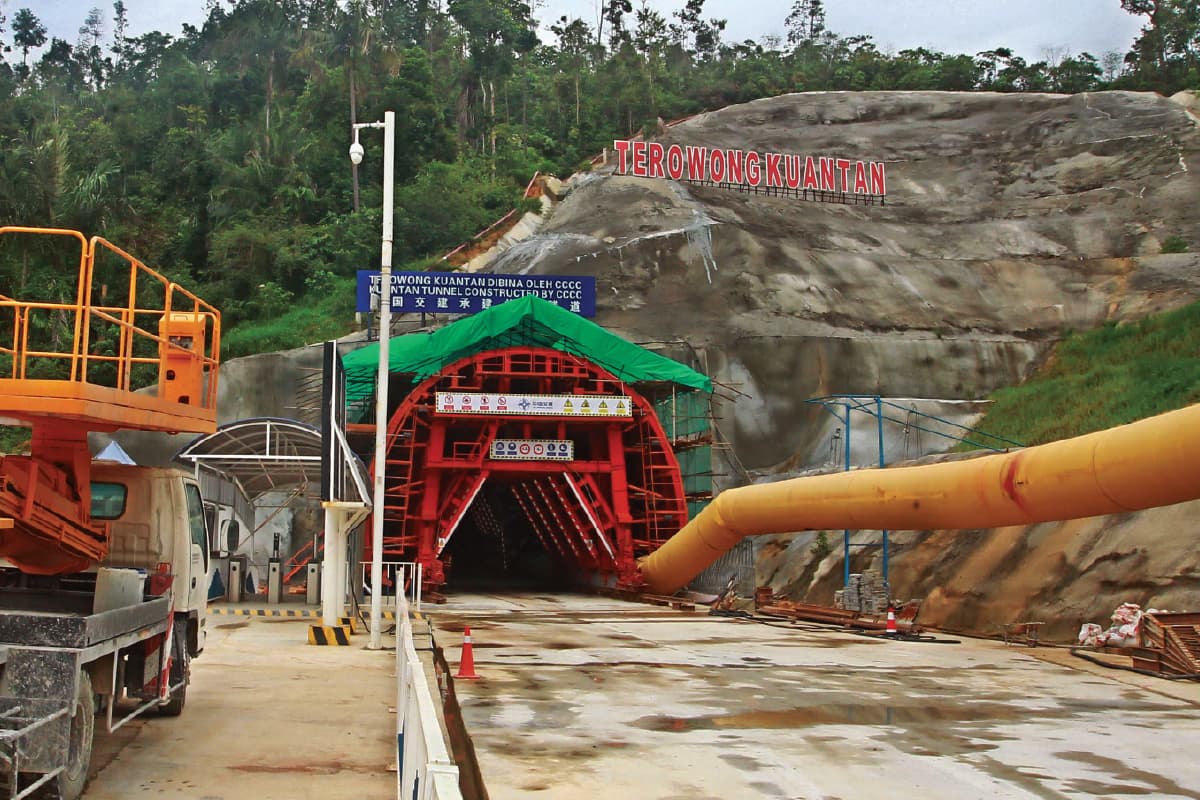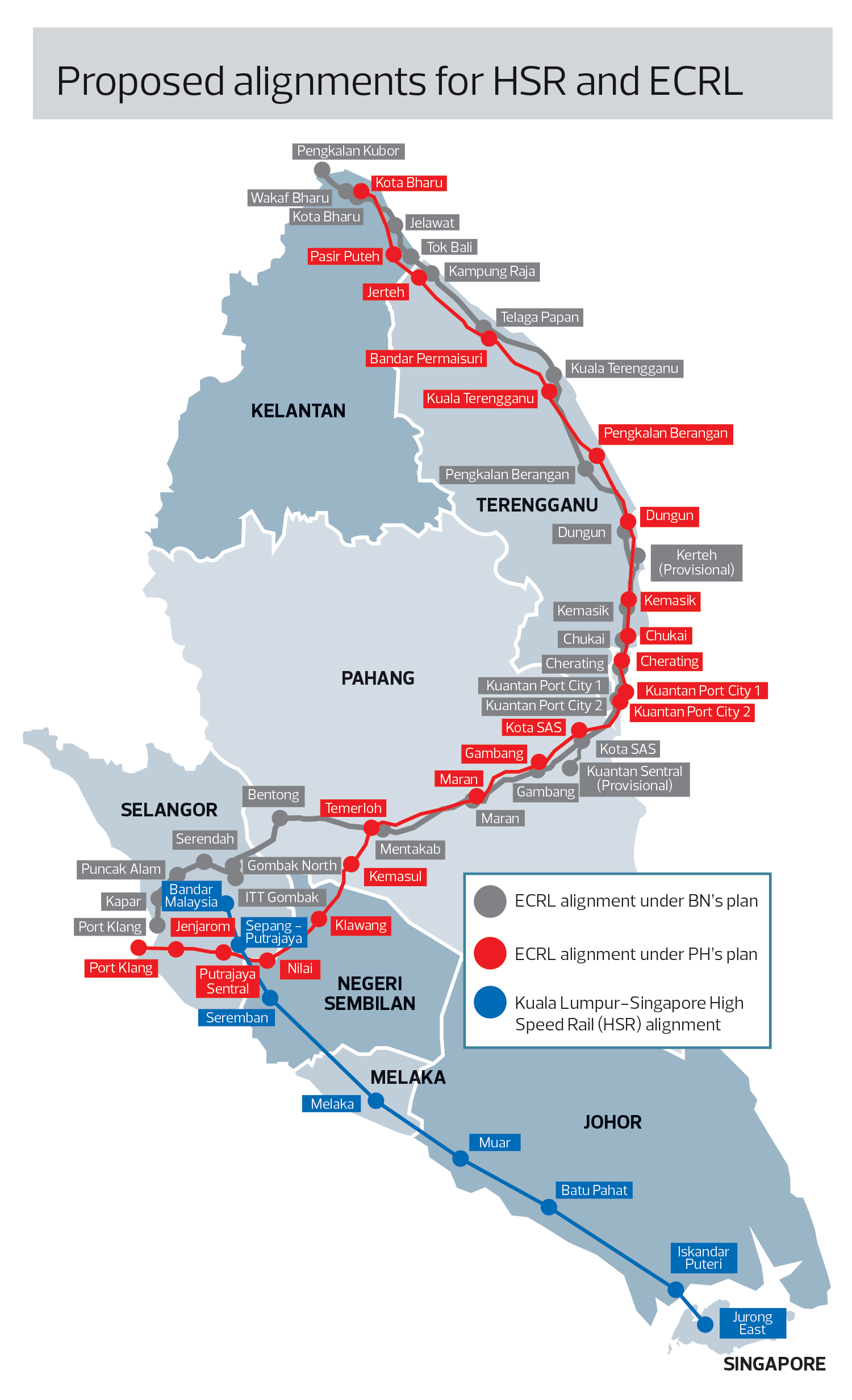
This article first appeared in The Edge Malaysia Weekly on November 30, 2020 - December 6, 2020
THE Kuala Lumpur-Singapore High Speed Rail (HSR) project has again been put under the spotlight after a spokesman for Singapore’s Transport Ministry told The Straits Times that Malaysia has sought some changes. The sought changes come with only a month left to Singapore’s “final extension” of a suspension period sought by Malaysia for commencement of construction — initially postponed from September 2018 to end-May, with a second deferment to end-December.
The spokesman did not disclose the changes sought, but said the republic is committed to fulfilling its obligations under the bilateral agreement between both countries.
The Edge has learnt, however, that one of the changes mooted is for the HSR to be connected to the Kuala Lumpur International Airport (KLIA). Even so, the proposed change to the HSR alignment is not something recently mooted but had been suggested in 2018 when the project was put under review by the then Pakatan Harapan (PH) government.
Former minister of transport Anthony Loke, when contacted by The Edge, confirms that the PH government had looked at the synergies between the various railway projects that the country had wanted to undertake to maximise its potential economic spillover.
“It is important to look at the HSR project not just as one project. The connectivity and synergy with other rail infrastructure is crucial to optimise the economic and social benefits of the projects,” Loke says.
While the HSR was put under the purview of the Ministry of Economic Affairs during PH’s 22-month administration, Loke, as transport minister, was involved in negotiating the RTS (rapid transit system) Link project with Singapore. The proposed RTS would connect Johor Baru with Singapore and help ease the traffic congestion on both the Causeway and Second Link.
Loke also took charge of the development of the East Coast Rail Link (ECRL) and existing railway networks.
“Towards the end of 2019, there were private-sector led proposals to execute the HSR in a way that would connect it seamlessly with ECRL and the existing Express Rail Link (ERL).
“The priority is to achieve integration of the entire railway network for the long-term benefit of the country. Once built, railway infrastructure will last for generations. Therefore, HSR is a once-in-a-lifetime investment that the government has to get right,” Loke stresses.
Officers of Datuk Seri Mohamed Azmin Ali — previously the economic affairs minister — rejected a request by The Edge for comment on the HSR. Instead, The Edge was asked to refer the matter to the current minister of economic affairs, Datuk Seri Mustapa Mohamed.
Azmin’s deflection of the issue is perplexing, as he is still the Malaysian government’s lead negotiator, even though the HSR project is overseen by the Economic Planning Unit, led by Mustapa. The Edge did not approach Mustapa for comment.
Last Friday, Mustapa said the government was negotiating with Singapore on Malaysia’s proposals to improve the HSR project.
Following PH’s unexpected victory in the 14th General Election in 2018, all mega infrastructure projects, including the ECRL, were put under review. Subsequently, the PH government decided that the ECRL project would proceed but at a lower contract price. This required changes to the alignment of the line.
The ECRL was to take a southern detour after Temerloh, Pahang, into Kemasul (also in Pahang) before crossing into Negeri Sembilan, with proposed stations in Klawang and Nilai. From Nilai, the ECRL was to cross into Selangor to Putrajaya Sentral, and then to Jenjarom before reaching Port Klang.
The original alignment proposed by PH’s predecessor Barisan Nasional (BN) was different — the ECRL was to cross into Selangor via Bentong, Pahang. Moreover, it mooted stations in Gombak North, ITT Gombak, Serendah, Puncak Alam, Kapar and Port Klang.
PH maintained its proposed line would result in savings of at least RM20 billion, as it did away with the construction of an RM8 billion tunnel between Genting Sempah in Bentong and Gombak. In addition, it maintained its proposed line would serve Negeri Sembilan, which also has many industrial estates.
After the Perikatan Nasional (PN) coalition government replaced PH in March, the Ministry of Transport under new Transport Minister Datuk Seri Wee Ka Siong indicated plans to revert the ECRL alignment to BN’s original route.
In a written response to a question from Senator Datuk Ismail Ibrahim in respect of the original alignment, which goes through Bentong and Gombak, Wee said the government was in the midst of reviewing Section C of the alignment, which is the stretch from Mentakab to Port Klang.
What does this have to do with the HSR?
An ex-senior government official who was involved in the discussion says the PH government then was open to the idea of having an interchange station in the Sepang-Putrajaya corridor, integrating the ECRL, HSR and ERL.
It is known and confirmed that the HSR will have a station in the Sepang-Putrajaya corridor. With the southern alignment route of the ECRL, the line too was planned to have a station in Putrajaya South, according to the proposed scheme announced by the Land Public Transport Agency early this year.
Where exactly the station was to be built was not decided by the PH government, however, as there were possibilities of it being at the existing Salak Tinggi ERL station or at a new station in Putrajaya South, the ex-government official says.
Depending on the outcome of the realignment, there was also the idea that the HSR could be connected directly to KLIA, even though the idea was said to have been rejected by Singapore.
There was also another option — to have an ERL station built in Bandar Malaysia, the eventual terminus for the HSR in Kuala Lumpur, says a source close to the PH coalition. This is because while there is no plan for an ERL station to be built in Bandar Malaysia, the ERL line already runs on the edge of the mega development.
An ERL station at Bandar Malaysia would allow HSR passengers from Singapore and the southern peninsula to hop on the ERL at Bandar Malaysia to get to KLIA, instead of taking the Putrajaya Mass Rapid Transit (MRT) Line to Putrajaya Sentral.
The ERL runs faster than the MRT, and the latter also has more stations than the ERL and requires another change at Putrajaya Sentral. If an ERL station is built in Bandar Malaysia, passengers from the HSR would need only one change to reach KLIA and klia2.
Another source confirms this, saying that the operator of the ERL, YTL Corporation Bhd, has expressed interest in having a station in Bandar Malaysia to serve HSR passengers. This would make better use of the ERL, which is underused.
“Even before the pandemic, only about 60% of the ERL capacity was used,” the source says, noting that a direct connection between KLIA and Bandar Malaysia would also boost Bandar Malaysia’s property value.
Interoperability between ECRL and HSR considered
Another aspect that was considered by the PH government and the stakeholders involved was the interoperability of the ECRL and HSR, says the ex-government official. This is because both the ECRL and HSR trains can possibly run on each other’s tracks if the signalling and systems are planned together in the early stage, as, fundamentally, both are standard gauge railways.
“Imagine the ECRL train running from Kelantan all the way down to Johor via the HSR track with one or no interchange. The signalling systems need to talk to each other, which is challenging, but can be done as is proven in Europe.
“We were looking at the potential of having a large standard gauge fast rail network over the long term,” he says.
However, if the current government realigns the ECRL to the northern corridor through Gombak, then the two lines will not meet, negating the benefits of interoperability between the two lines.
Although the construction of the HSR was scheduled to start in 2018, the change in government led to a postponement and a new start date of end-May 2020. The Malaysian government agreed to compensate Singapore with S$15 million (RM45.6 million) in suspension costs. However, there has since been another deferment until year-end.
With only another month to go, it is unclear whether both governments can agree to the final scope and alignment, as well as financing. Although the cost of the HSR has yet to be made known — some quarters peg it at RM68 billion — it is likely to be the single-largest infrastructure work that Malaysia has undertaken so far.
The funding model remains unclear, as well as the percentage of costs to be shared between the two neighbours. While the bulk of the line will run through Malaysia, Singapore is expected to benefit immensely from the HSR as the larger and more economically developed city.
There is also talk that the consortium that wins the tender for construction of the HSR will be required to handle the financing through a build-operate-transfer (BOT) model.
It is understood that a project of this scale cannot possibly be funded via the government’s development expenditure. Next year’s budget, which is touted as the biggest budget ever, only allocates RM63 billion for development expenditure.
In recent years, large rail infrastructure projects such as the MRT 1 and 2, LRT extension and the ECRL were all funded “off balance sheet” via the issuance of government-guaranteed sukuks by the special-purpose vehicles undertaking the projects.
Save by subscribing to us for your print and/or digital copy.
P/S: The Edge is also available on Apple's App Store and Android's Google Play.

